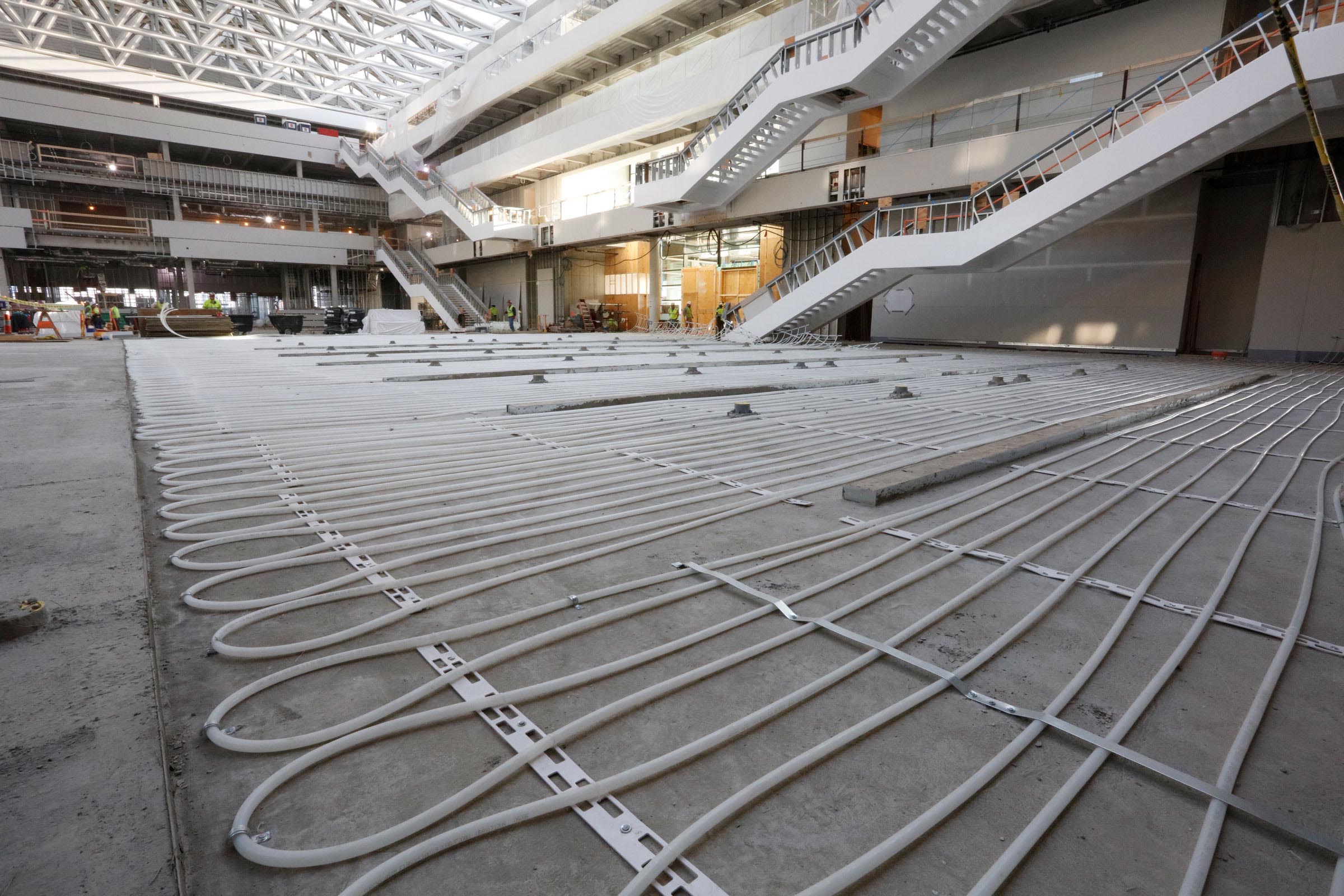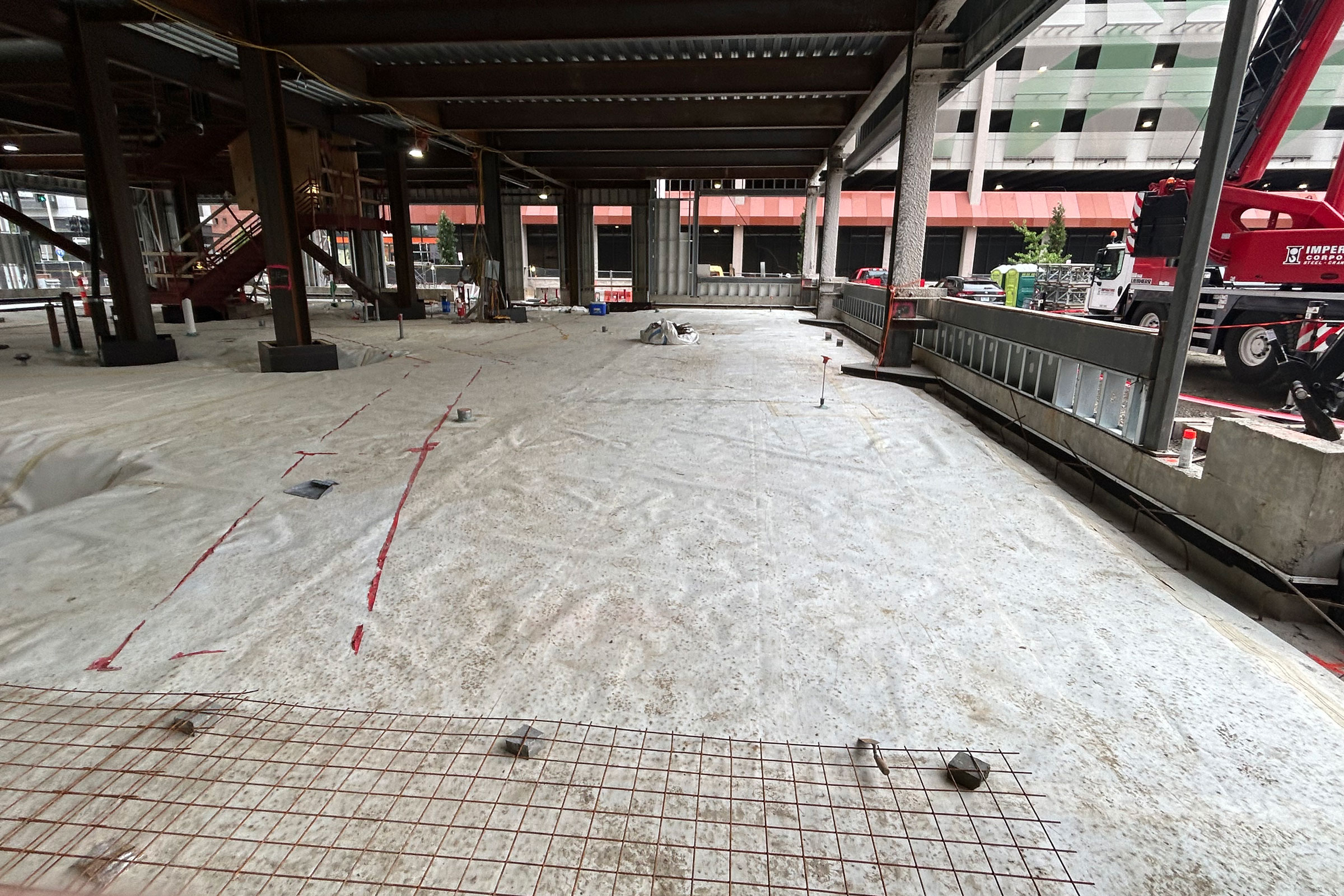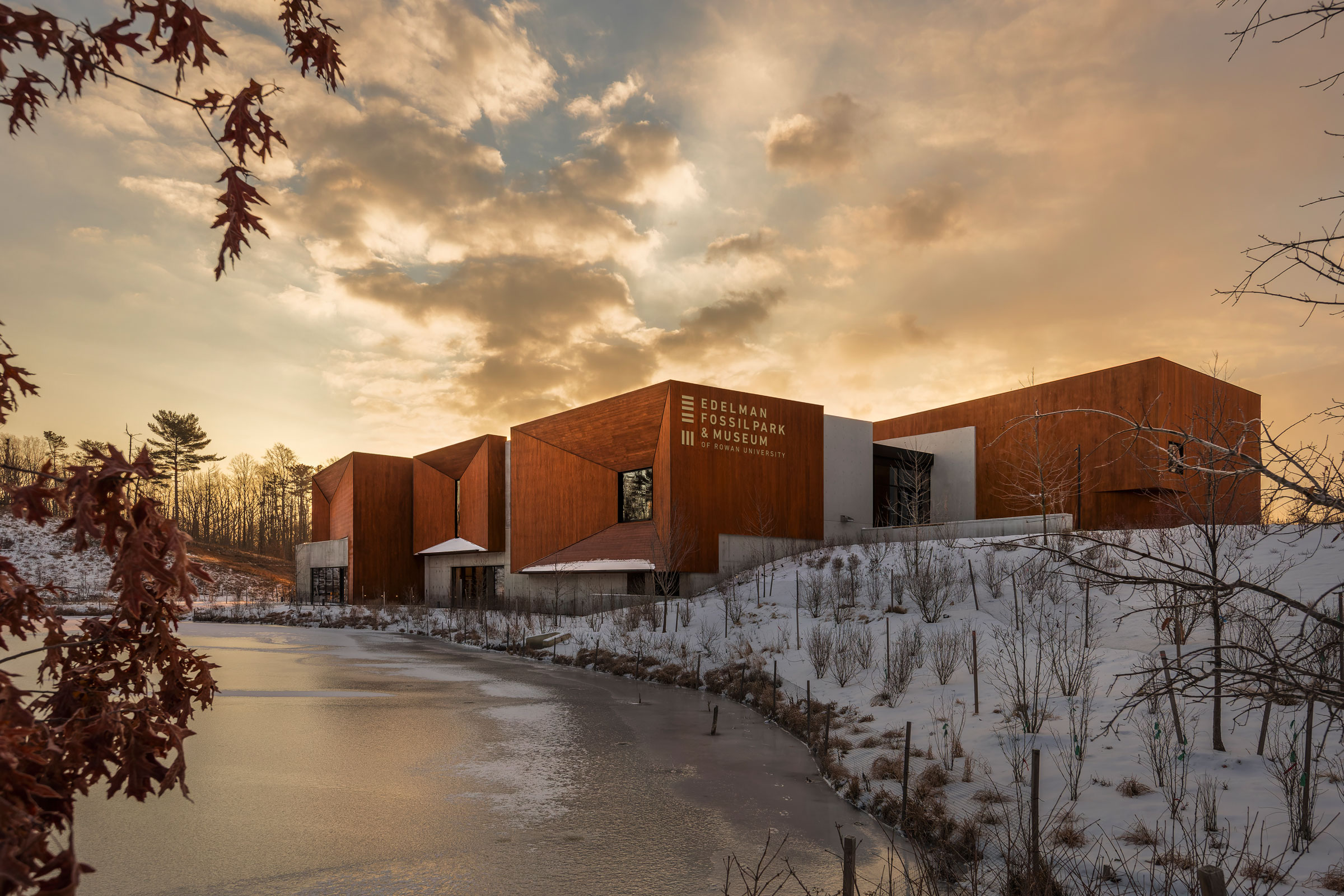Story at a glance:
- Radiant heating and cooling systems are much more energy-efficient than traditional forced-air HVAC systems.
- Because they transfer heat directly to objects and occupants, radiant heating systems help create a more comfortable indoor environment.
- Radiant cooling systems are extremely beneficial in dry, arid climates while radiant heating systems perform best in regions with mild summers and cold winters.
The cost of energy continues to rise and temperatures become more and more unpredictable. Radiant heating and cooling systems might just be part of the solution.
In this article we explore the many benefits of radiant heating and cooling systems.
What is Radiant Heating?
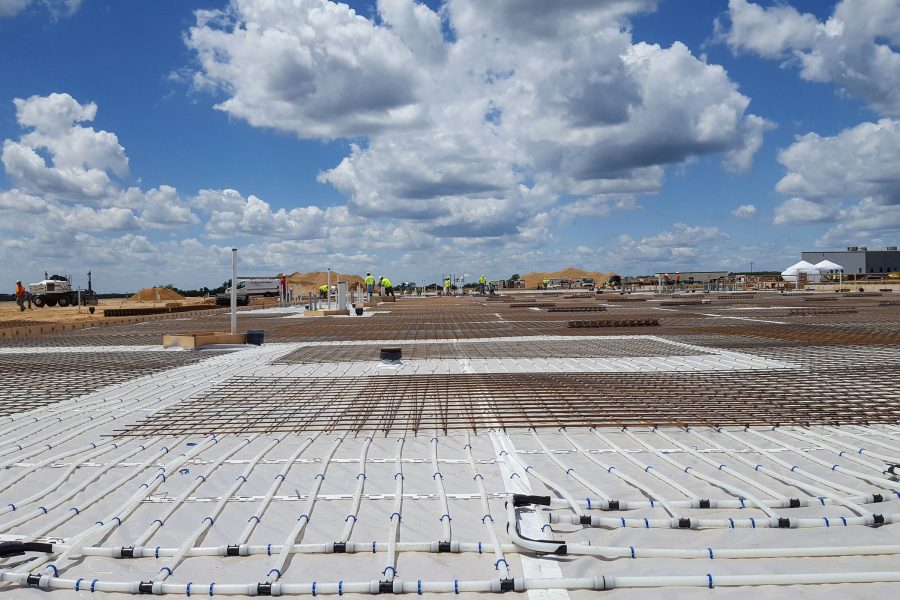
Photo courtesy of Uponor
Radiant heating systems supply heat directly to surfaces in a building. Electricity, hot water, or warm air make direct contact with the system’s surface and infrared radiation delivers the heat to the air, occupants, furniture, and any other objects in the room to warm up the space.
Because radiant systems use contact to transfer heat, they do not disrupt allergens in the home the way forced air can. Plus, the lack of forced air system means radiant heating and cooling requires a dedicated outside air system. This means they cut out all recirculated air that would come from forced air systems and lead to better indoor air quality and healthier spaces. Often radiant systems are healthier, particularly for sensitive individuals.
Radiant heating systems are typically installed as individual zones, each of which is designed to heat a specific area in a building and is controlled by its own thermostat. “Not only does this provide custom comfort control when people are in a space, it also makes the system even more energy-efficient because people can keep the heat low in spaces that are not in use,” Kim Bliss, content development manager at GF Building Flow Solutions (formerly Uponor), previously wrote for gb&d.
Types of Radiant Heating
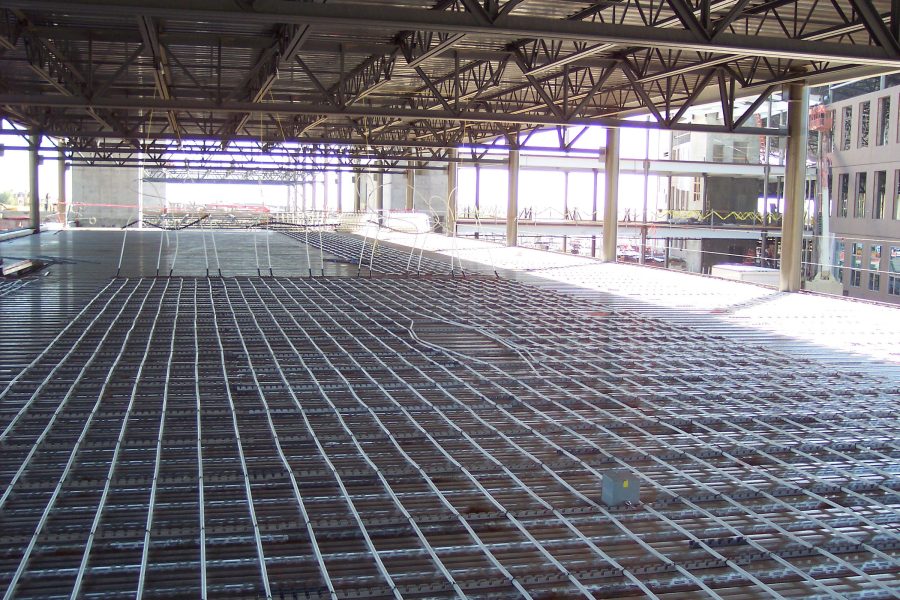
Radiant heating systems can be either air-heated, electric, or hydronic. Photo courtesy of Uponor
There are three basic types of radiant heating systems, defined by the medium with which they use to radiate heat throughout a space: air-heated, electric, and hydronic.
Air-Heated
As the name suggests, air-heated radiant heating systems use air to distribute warmth throughout a building—but not in the same way that forced-air systems do. Rather than circulate warm air via ducts, air-heated radiant systems pump hot air into ducts embedded within the flooring. This warm air heats up the floor slab (typically made from concrete), which in turn radiates heat upwards into the room itself.
Electric
An electric radiant heating system typically consists of either electric heating cables embedded in the floor or electrical matting mounted on the subfloor below the actual flooring.
Electric radiant heating systems are most effective when paired with a high thermal mass material like concrete, as such materials will store heat for long periods of time after the system is shut off. This ultimately results in reduced energy consumption and lower operating costs.
Hydronic
Hydronic radiant heating systems, on the other hand, circulate heated water—or a mixture of water and antifreeze—through a closed-loop network of pipes laid underneath a building’s flooring and are considered to be the most efficient type of radiant heating.
“Water has the capacity to transport energy 3,500 times greater than air,” writes Bliss. “That means a hydronic radiant heating system that uses water to heat a space rather than air will be much more energy-efficient.” The water in hydronic radiant systems may be heated either by a boiler or heat pumps, with the most sustainable options being electric boilers/heat pumps and geothermal heat pumps.
What is Radiant Cooling?
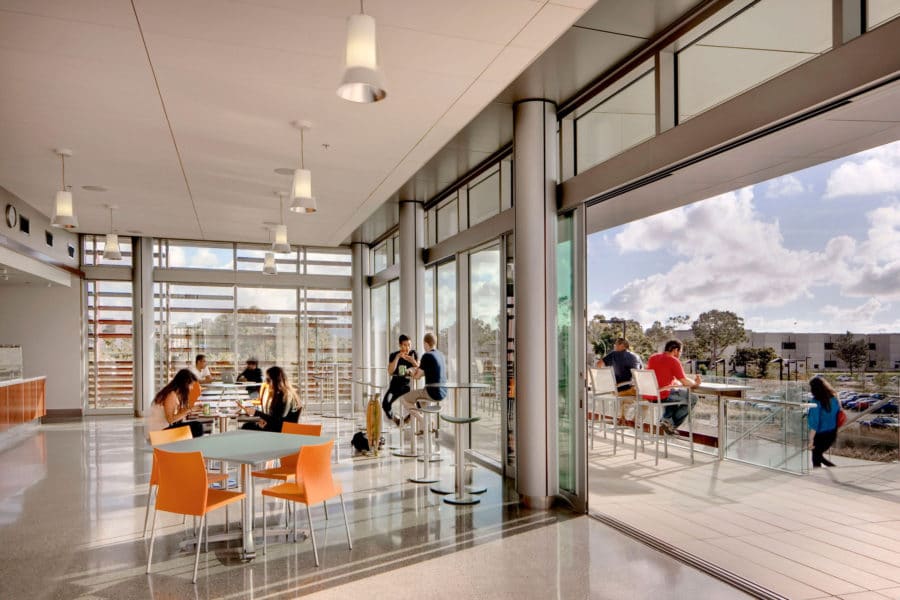
The cafe at the Sanford Consortium for Regenerative Medicine features sliding glass walls, allowing users to take advantage of ocean breezes while shading devices work in concert with ventilation and chilled beams to enhance energy efficiency. Photo by Steve Keating
Just as radiant heating uses contact to contribute heat, radiant cooling uses contact to remove heat from spaces and chill them. Pipes and panels are pumped with cold water, which slowly absorbs heat within the space and lowers the room’s ambient temperature.
A common concern regarding radiant cooling systems is their ability to function in different climates, particularly humid ones, as such conditions could lead to condensation in the event that the surface temperature is equal to or below the dew point. This is, however, an increasingly outdated concern that can be mitigated by the installation of a dehumidifier or dedicated outdoor air system (DOAS)—equipment that many new buildings already possess.
“Existing building control systems dehumidify the ventilation air to the point that a space never reaches the dew point but remains comfortable for occupants,” Adam Botts, assistant product manager at Viega, previously told gb&d. “For example, if you’re in a building in Atlanta or New Orleans, there are building controls and dehumidifiers to keep the humidity below dew point so a radiant cooling job is going to perform just fine.”
7 Benefits of Radiant Heating & Cooling
Radiant heating and cooling offers many benefits over traditional forced-air HVAC systems—we’ve outlined seven of them below:
1. Improved Energy Efficiency & Reduced Operating Costs

Outdoor heating increases the utility of spaces year-round when high-efficiency radiant heat technology is used. Zoning, scheduling, and dimmability furthers efficiency. Photo courtesy of Bromic
Radiant heating systems are best known for their high energy efficiency, with most systems operating approximately 25% more efficiently than forced-air HVAC systems. This is primarily due to the fact that radiant systems transfer heat directly to a room’s occupants, whereas forced-air systems transfer heat directly to the air—the problem with the latter comes from warm air’s tendency to rise. “Radiant is also more energy efficient because the heat stays near the floor where people are located,” Bliss writes. “In a traditional forced air HVAC system, the hot air blows into a room and quickly rises up to the ceiling.”
This ultimately leaves the area near the floor—that is, the area in a room that is actually occupied—much cooler than the ceiling where warm air collects. “If you put a thermometer up on a high ceiling it could be five degrees or more warmer up there, and that is a lot of energy you’ve spent conditioning air that is being delivered to an unoccupied area,” Botts says.
Energy efficiency does, however, depend in part on the type of radiant heating system installed:
- Air-heated. Generally speaking, air-heated radiant systems are considered to be the least energy efficient, as air simply cannot hold heat as well as water or electric heating elements; there may be certain cases where air-heated radiant systems make sense in commercial settings, but they are not recommended for residential use.
- Electric. Electric radiant heating is considered more efficient than baseboard heating, forced-air systems, and even the average space heater; electric radiant systems can be made even more efficient by installing them underneath/embedding them in flooring with a high thermal mass, as this essentially allows them to store heat for long periods of time.
- Hydronic. Out of all radiant heating systems, hydronic systems are considered to be the most efficient, requiring far less energy than other comparable HVAC options like variable refrigerant flow systems or variable air volume systems; like electric radiant systems, hydronic systems work best when embedded in a high mass material like concrete.
Radiant cooling systems also operate more efficiently than their forced-air counterparts, typically requiring half the horsepower and materials to effectively cool a space compared to traditional cooling methods, according to the experts at GF Building Flow Solutions.
Radiant heating and cooling systems’ lack of ductwork also helps improve their energy efficiency, as forced-air systems can lose anywhere from 25 to 40% of their heating and cooling energy via leaky or poorly insulated ducts. These losses ultimately require the HVAC system to work over 50% harder to achieve the desired temperature.
Because they work more efficiently and consume less energy than other HVAC systems, radiant heating and cooling systems also help to reduce a building’s operating costs. Radiant systems—and especially hydronic radiant systems—are also extremely compatible with renewable energy sources like solar and geothermal power, which can reduce utility costs even further.
2. Improved Indoor Air Quality
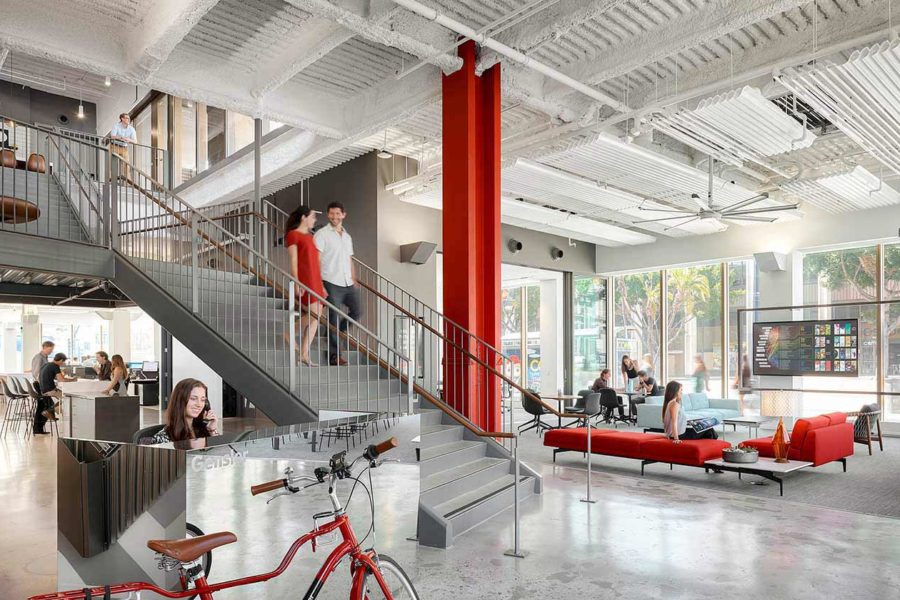
Gensler’s office in San Diego is a great example of radiant waves applied in an open space for both the aesthetic and functional advantages they provide. Photo by Ryan Gobuty
One of the major benefits of radiant heating and cooling systems—even air-heated ones—is their positive impact on indoor air quality. Because they do not actively recirculate heated or cooled air throughout a building, radiant heating and cooling systems do not stir up or transport dust, dander, and other airborne particulates during their operation.
Buildings that utilize radiant heating and/or cooling still require some form of ventilation, but this can be achieved through the installation of a DOAS, which continuously supplies fresh air instead of recirculating stale indoor air.
“Elimination of recirculated air means that we can ensure only fresh air to the occupants, and by using these ventilation methods, we can make sure we exhaust stale air or contaminated air out of the space continually,” Michael O’Rourke, consultant to and past president of Barcol-Air, previously wrote for gb&dPRO. “This can prevent cross-contamination between rooms used for different activities, as well as isolating individuals and areas from each other.”
This can, in turn, help mitigate the so-called “sick building syndrome,” or when individuals develop symptoms of illness when inside buildings they frequently occupy.
3. Peace & Quiet
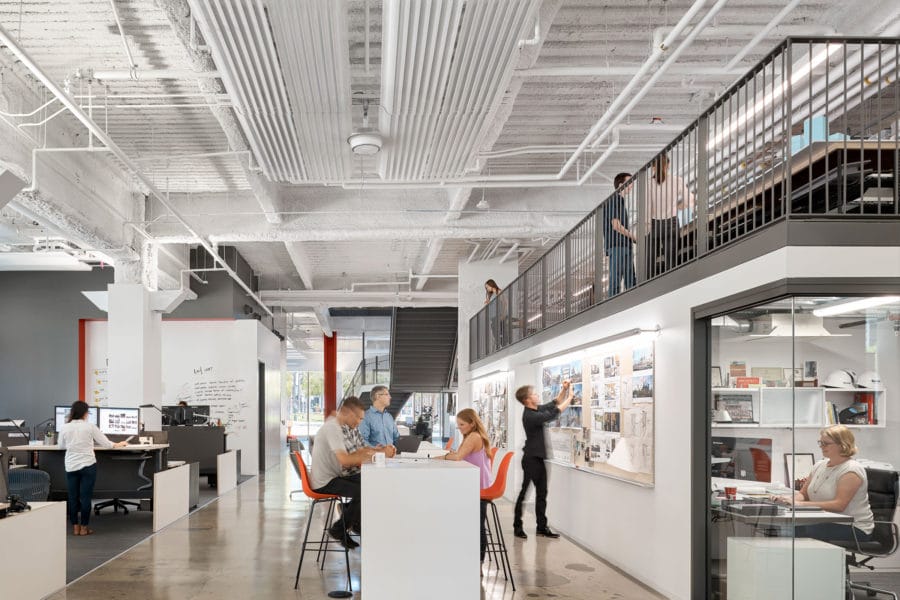
Radiant heating and cooling systems are much quieter than traditional forced-air HVAC systems, making them ideal for installation in offices, schools, and other places that require distraction-free environments. Photo courtesy of Barcol-Air
If you’ve ever been in a building that relies on forced-air heating and cooling, chances are you’ve heard the system running before you’ve actually felt the effects of its operation. “Most people are familiar with the loud sounds of forced air equipment turning on and running to accommodate interior climate comfort,” Bliss writes. “There is also the sound of the ductwork expanding and contracting as the hot air blows through the system and then cold air enters when the system is off.”
Because radiant heating and cooling systems do not circulate air through ductwork, they are much quieter than forced-air HVAC systems. This helps bolster indoor environmental quality, reduces distractions that might otherwise affect occupant productivity, and can even help projects earn LEED or WELL credits.
4. Increased Comfort
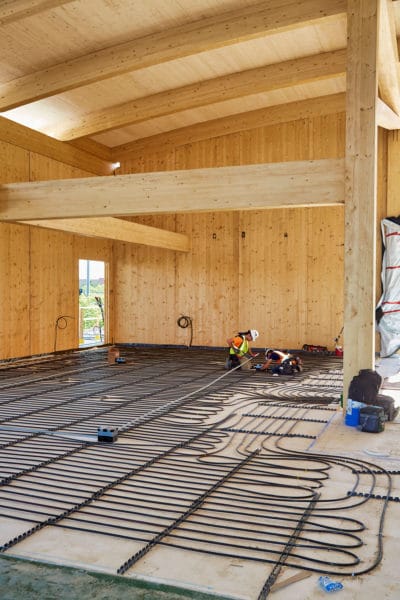
Radiant flooring heats spaces evenly and efficiently. Photo courtesy of Viega
Forced-air HVAC systems are somewhat infamous for their lack of consistency when it comes to distributing warm and cold air equally throughout a building—a characteristic that often leads to the creation of hot and cold spots, unwanted drafts, and general occupant discomfort. This is largely due to the fact that forced-air systems use the convection method to distribute hot and cool air, which is extremely divergent from the body’s ideal heating curve.
Radiant heating and cooling systems, on the other hand, transfer heat in much the same way our bodies do and maintain a single, consistent temperature across an entire space. “Radiant heating and cooling systems also provide ideal human thermal comfort,” Hailey Mick, engineering business development manager at GF Building Flow Solutions, wrote in a previous gb&d article. “Why? Well, looking at how the human body exchanges heat energy with the space around it, almost half of it is through radiation heat transfer.”
By aligning more closely with the body’s ideal heating curve, radiant heating systems can actually help occupants feel warmer at a lower temperature, further helping to reduce energy usage. “People are more comfortable with a radiant floor heating system at a lower thermostat setting, such as 68°F, than with a forced air system at a higher thermostat setting like 72°F,” Bliss writes. “Those four degrees can make a big difference in energy use over time.”
And because most radiant heating and cooling systems are installed as zones, occupants are afforded a higher degree of control over the temperature in any given room; this means radiant systems are capable of accommodating a wide range of individual preferences, further improving occupant comfort.
5. Low Maintenance & Long-Term Performance

Longevity and relatively low maintenance requirements are two other benefits of radiant heating and cooling systems. Photo courtesy of Uponor
Compared to other HVAC options, radiant heating and cooling systems possess fewer complex parts that might break down or necessitate routine maintenance. “Since these systems have no moving parts—no local fans or motors—they require little to no maintenance,” O’Rourke writes. “The systems can be made to blend in with the ceiling so that they look exactly the same as existing ceilings or added in as an architectural feature.”
In addition to being low-maintenance, radiant heating and cooling systems have an average expected lifespan of 30+ years, with many systems lasting upwards of 40 years when properly maintained.
This longevity is especially true of modern hydronic radiant heating systems, most of which now use PEX pipes to circulate water. PEX, or cross-linked polyethylene, is a thermoset plastic piping that is extremely durable, rust- and corrosion-resistant, and has an operational lifespan of approximately 100 years, greatly reducing the need for costly resource-intensive repairs and replacement work.
6. Smaller Footprint
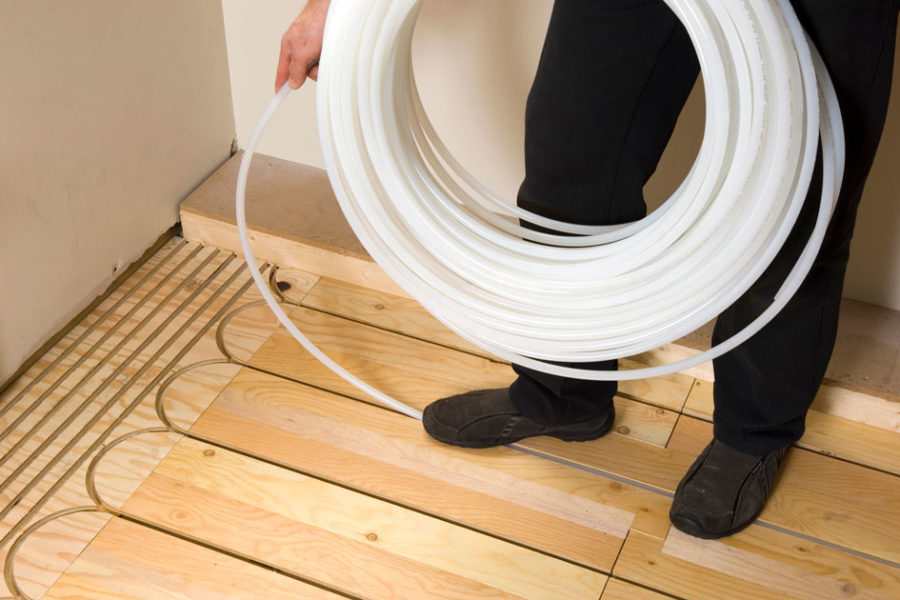
One of the many benefits of radiant heating and cooling systems is that they possess a much smaller footprint than forced-air HVAC systems thanks to their lack of ductwork. Photo courtesy of Uponor
Because they do not require ductwork, radiant heating and cooling systems—with the exception of air-heated radiant systems—possess a smaller footprint than forced-air HVAC systems. The tubing, mats, wires, and panels that make up radiant systems are all comparatively thin and unobtrusive, facilitating greater architectural freedom in building design.
Hydronic radiant heating systems that use PEX pipe use even fewer materials than traditional hydronic systems thanks to PEX’s extreme flexibility—a trait that allows the pipes to bend around corners without the need for connector pieces. “This reduces materials inside a building while also improving water flow and reducing pressure loss for better system efficiency and performance,” Devin Abellon, former business development manager for engineering services at GF Building Flow Solutions, previously wrote for gb&dPRO.
7. Flexible & Versatile
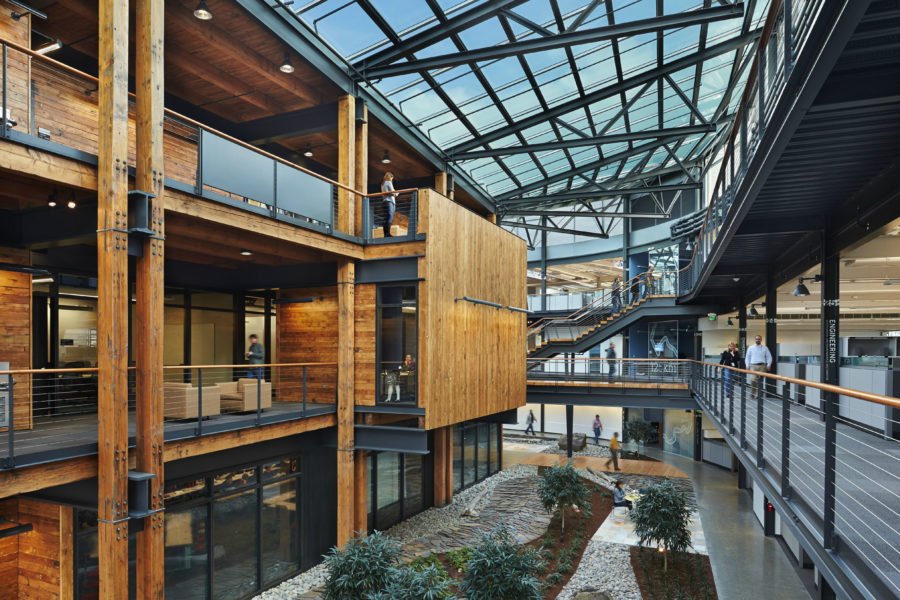
Federal Center South’s atrium has radiant heating in its aluminum ceiling frame, showing off the one of the benefits of radiant heating and cooling systems: their flexibility. Photo courtesy of Barcol-Air
Radiant heating and cooling systems are also incredibly versatile, allowing them to be used in a variety of projects. “Radiant systems come in many shapes and forms and can be adaptable to many types of buildings, as well as the desires and visions of the design team,” O’Rourke writes. Radiant systems can be installed underneath floors, in walls, and in ceilings, either in the form of tubing, mats, wiring, fins, or even beams.
Radiant heating and cooling systems are also extremely flexible in terms of where in the world they may be installed. Radiant heating systems, for example, do especially well in regions with milder summers and cold winters, though they can realistically be implemented in any project that is well-insulated and well-sealed.
Radiant cooling systems, on the other hand, are especially useful in dry, arid regions with low ambient humidity, such as the American southwest—though as we’ve already mentioned, they can be successfully implemented in almost any locale provided the project possesses an airtight envelope and an efficient dehumidifier system.

